
Strata Geosystems' eco-friendly solution
with geogrid at Kuber Tila
What is Kuber Tila?
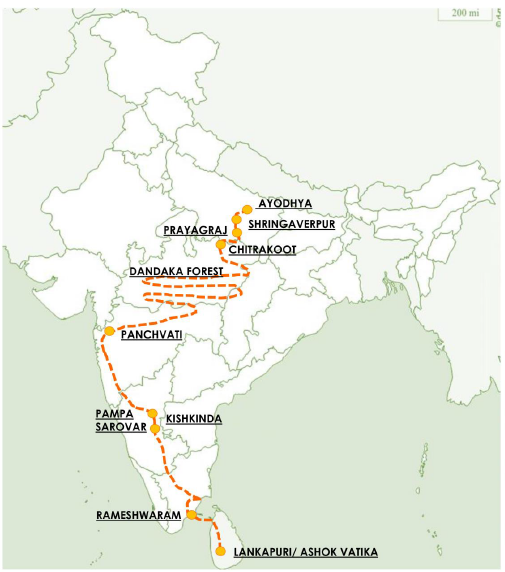
The Kuber Tila project, located in Ram Mandir, Ayodhya is a small hillock within the temple grounds. It underpins the Ram Van Gaman path – symbolising the journey of Lord Ram from Ayodhya to Lanka. Kuber Tila, also known as Kuber Teela, is a revered location believed to be the birthplace of Lord Kuber, the Hindu deity associated with wealth and prosperity.
The beautification efforts at Kuber Tila highlight its role as a cultural and religious landmark within the Ram Janmabhoomi complex. This sacred site holds immense religious significance for Hindus, who visit it to pay homage to Lord Kuber and seek blessings for wealth, success, and prosperity in their lives.
The engineering team identified the need for slope retention. The need of the project was soil stabilization, as well as construction choices that would not clash with the beauty of the premises, and be complementary to the nature of the design aesthetics. Through the use of its trademarked StrataGrid geogrids, StrataWeb geocells and StrataDrain geocomposites products, and geoengineering principles, Strata Geosystems in partnership with TCE, has transformed the area into a symbol of eco-friendliness and responsible engineering. Situated on 2.7 acres of land, this project combines innovation and engineering expertise to create a harmonious coexistence of infrastructure and nature. The slope retention project is proudly zero concrete and zero steel, unlike typical projects of similar nature.
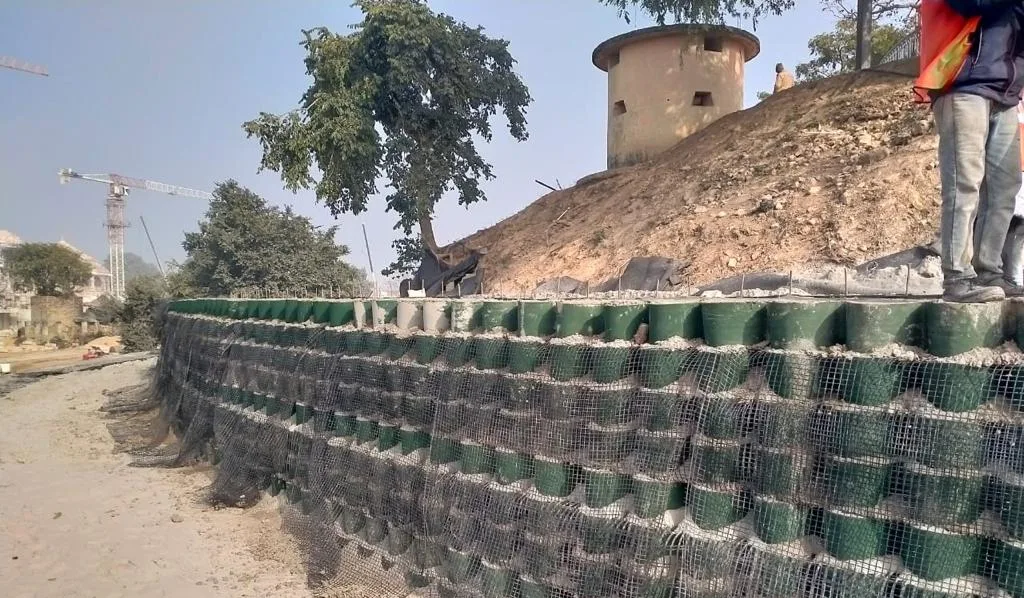
How does Kuber Tila project challenge traditional construction?
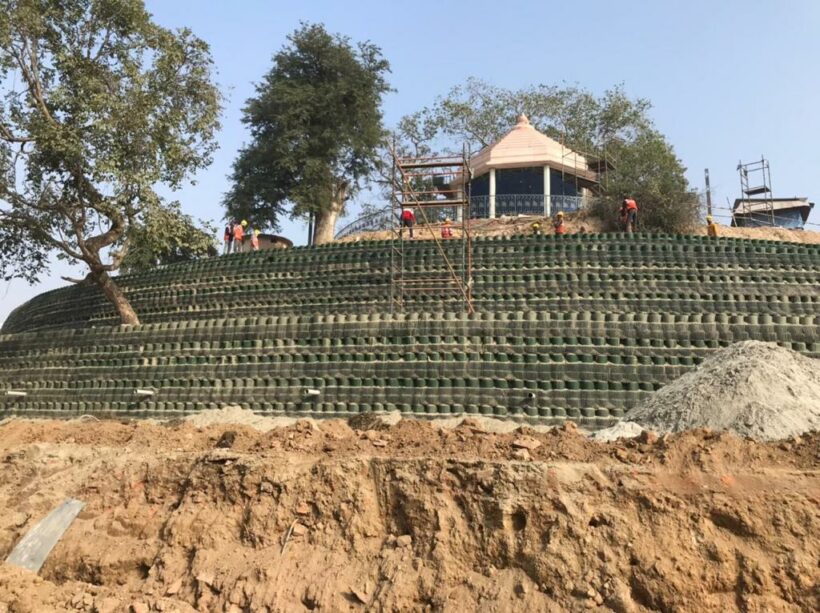
Traditional methods for adapting steep slopes would typically rely on large quantities of steel and concrete, which have a significant environmental impact. The Kuber Tila project, instead takes a different approach. The 12-meter-high slope uses 3 different geosynthetic products to achieve structural stability equivalent to that of traditional steel and concrete methods. Geosynthetics are polymers with different applications in construction used to stabilise terrain, using permeable structures.
It employs the use of geogrids, geocells, and geocomposites to minimise the use of regular materials and instead incorporates sustainable alternatives. As a leading manufacturer of geosynthetic products, Strata Geosystems, works with firms to deploy its state of the art materials across projects of varied scale, and applications. One of the key innovations used in the project is the utilisation of StrataWeb geocells made of high-density polyethylene. These cells are stacked and connected to create a framework that stabilises the soil and prevents landslides and erosion.
Between the cells, vegetative growth is allowed, further enhancing the overall strength of the structure. By using these geo cells, the project significantly reduces its carbon footprint and conserves natural resources. Instead of relying on carbon intensive methods, geosynthetics are seeing wide adoption as a means to provide stability and safety to structures.
What geo-engineering innovations are used in the project?
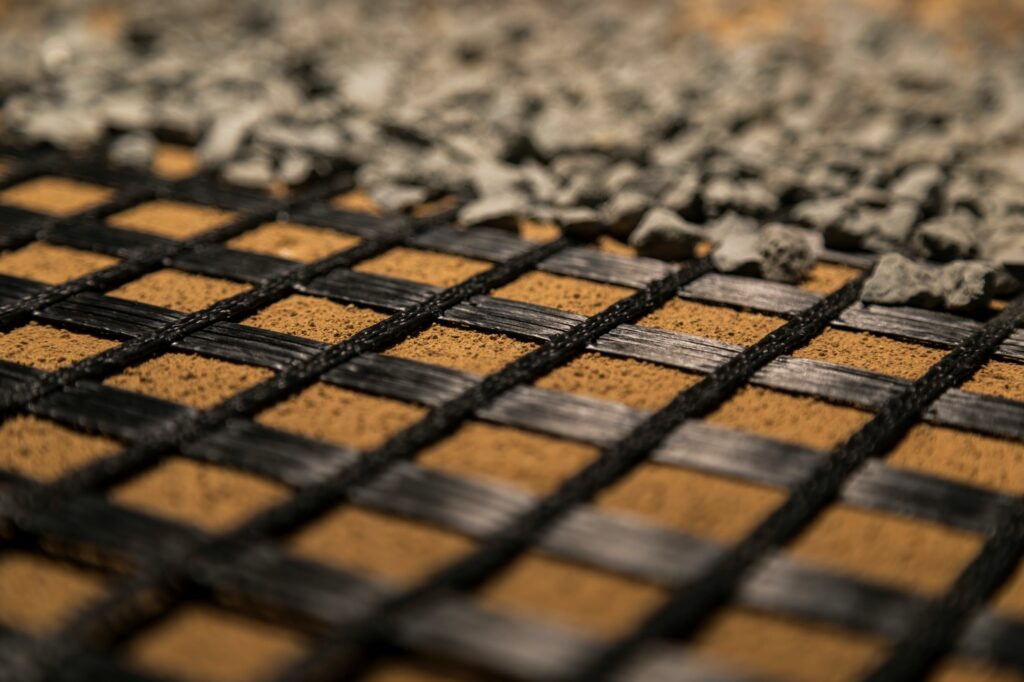
The requirement was to provide soil stabilization, alongside fascia/slope strengthening, and draining for water. To address these project needs, three innovative geosynthetic products have been employed: StrataGrid, StrataWeb, and StrataDrain. Each of these products were chosen to achieve specific objectives and create a comprehensive solution.
StrataGrid geogrids are used as the primary reinforcement for stabilizing the soil. StrataGrid acts like a super-strong fabric, providing long-lasting support to the soil with its special coating that lasts over 100 years. StrataGrid offers exceptional tensile strength and a high molecular weight, enabling it to provide primary horizontal soil reinforcement, which creates a stabilized soil mass capable of handling vertical loads.
How does the project promote sustainability?
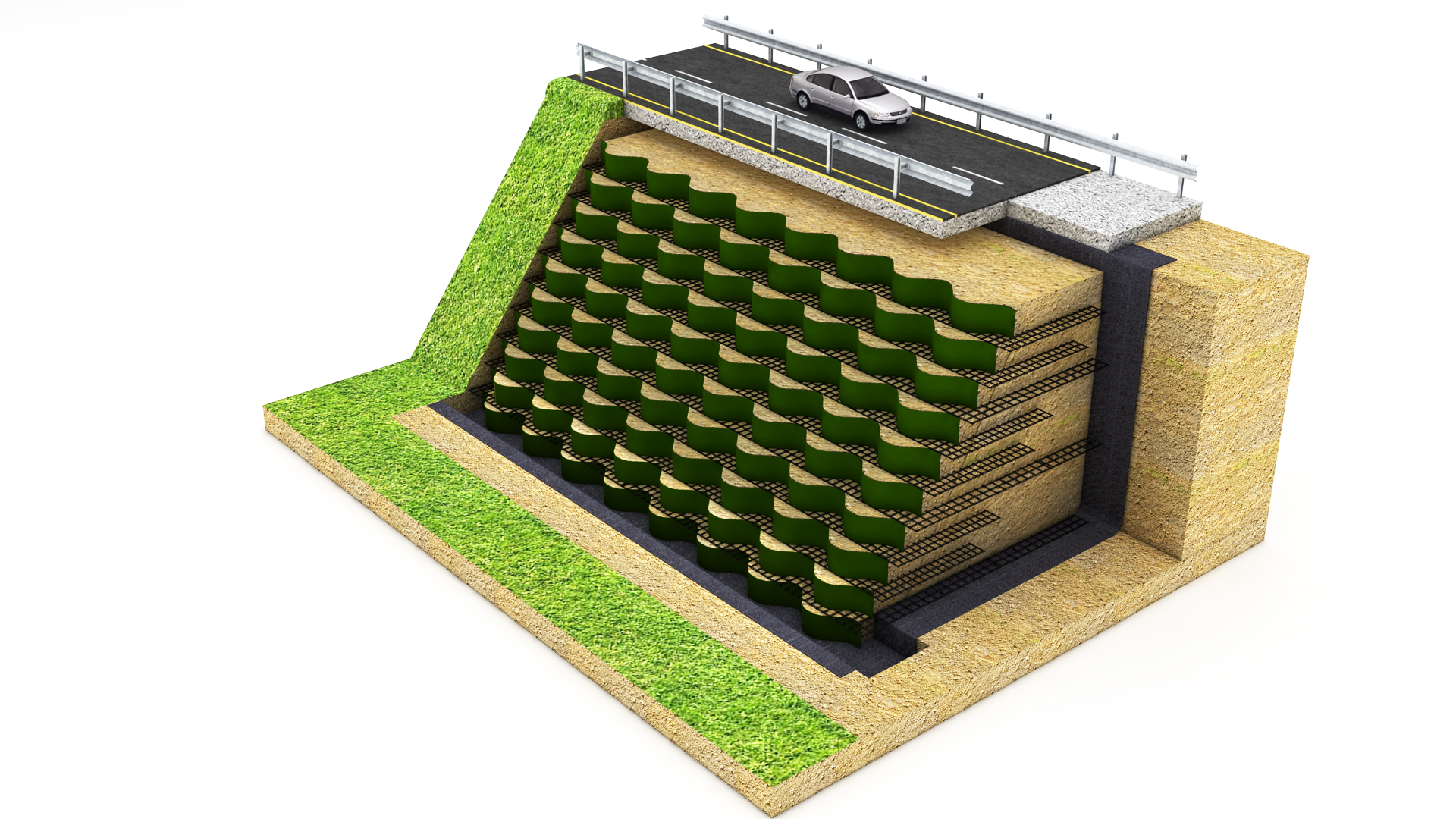
In addition to reducing reliance on traditional materials, the Kuber Tila project promotes sustainability and reduces the carbon footprint in several ways. The growth of foliage within the geocells and their exposed faces promotes biodiversity and reduces the urban heat island effect. Vegetation acts as a natural carbon sink, offsetting the emissions generated by construction activities. The project’s sustainable construction practices also minimises soil erosion, protecting the local ecosystem and preventing sedimentation in nearby water bodies. Over the course of a few years, the project aims to become a carbon negative site, through a wide variety of trees which are meant to be planted such as Mesua Ferrea, Nyctanthes arbor-tristis(Harsingar), Butea monosperma (Dhak) in a long list of curated plants and trees. The Kuber Tila project not only promotes sustainability but also serves as a model for future construction projects. While Strata Geosystems is a global leader in geosynthetics, the use of StrataGrid geogrids, StrataWeb geocells, and StrataDrain geocomposite in a way that integrates nature with man-made construction is the hallmark of its design engineering values.
By showcasing the power of innovative geoengineering techniques, the project demonstrates that large-scale construction can be carried out while minimising environmental impact. The success of this project emphasises the importance of collaboration between engineering and sustainability experts and sets a precedent for interdisciplinary collaboration in future sustainable construction initiatives.
The Kuber Tila project at the Ayodhya Ram Mandir showcases the potential of sustainable construction practices. Through its innovative use of geocells, geocomposites, and geogrids, the project pioneers a narrative of responsible engineering. Its commitment to reducing the carbon footprint, promoting biodiversity, and prioritizing the health of the environment makes it a model for future sustainable construction projects.
